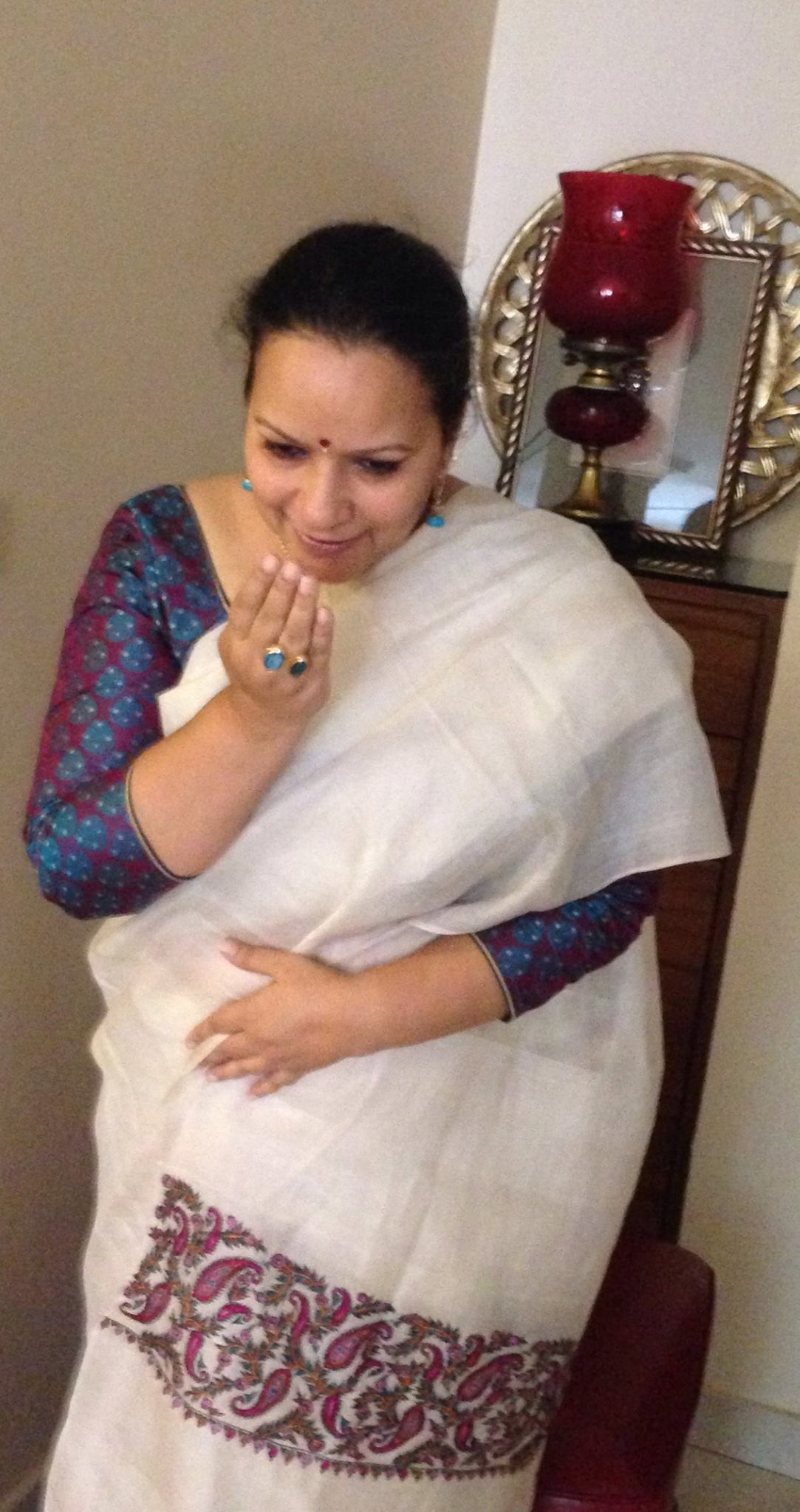I was a very little girl in 1971.
I was a very little girl in 1971.
I remember the sound of the siren that would go off and the black tape that was put on anything that was shiny. I was too little to remember conversations or to make sense of anything that was happening. But the fear, even in faraway Bombay, was palpable. The siren would go off and my mother would come rushing into the room to turn off the lights and keep us calm. And there would be announcements on the radio. These are mere flashes of memories of a toddler.
The war ended in just a few days. But the ravages of war were felt on both sides for very long. It was around this time that the Pathans, ( I thought they were ), began to visit Bombay with their bundles of artwork. White cloth, lovingly wrapped around sarees, stoles and bedsheets, that were worked on for months together, to embroider motifs of the land they came from. Chinar trees & leaves, birds, flowers, in Kashmiri stitch, almost always on a white background of silk, cotton or wool. Right through my childhood, they would visit once a year.
My mother would buy bedsheets and sarees from these men who would speak hindi but in a leheza ( accent ) that made them sound just like Kabuliwallah in the Balraj Sahni film. Poetry-like Urdu lafz (words) and a tameez ( manner ) that was so cultured. I would be Tagore’s Mini looking and listening to these tall, fair men with high cheekbones, and a soft demeanour, speak of their land, the hardships they were going through, the suffering of their women, the sadness of not being able to meet family that was “sarhad ke uss par “( across the border).
Always, my mother would listen, then buy a little something every time, even if she did not have money for all the grand things they brought. A cushion cover or a stole would be bought but she would not send them away without offering them water and a little snack of namkeen and meetha that Ma would have prepared and always stocked in her kitchen.
And I loved the sarees they brought. Phirans too, but the sarees were special. White ivory, smooth, handwoven Tussar with soft colours of exquisite hand embroidery, sometimes a surprising pop of colours in the midst of pastels.
So in my trousseau, I asked for a Kashmiri saree and got this one from my Ma.It holds within it’s folds memories of a little girl that had seen sadness in the eyes of grown men and also immense pride in their handiwork.
War is never kind. Not even to the victor.
In 2015, decades later, with the spread of the #100sareepact, I got a few messages in my inbox about women across the border enjoying looking at all the sarees that we wore. Few joined the pact. They feared a backlash. Some were quietly wearing their sarees but not posting them on social media. But there are so many stories of our shared past, and heritage, that are waiting to be told.
So, today, I wear my handwoven Tussar silk with Kashmiri embroidery saree and send a Salaam to all the women and men that are sarhad ke uss paar – across the border, from all of us in the pact.
Wars are fought between countries, connections are made between people.
It’s fulfilling to know that our pact has touched hearts everywhere.
Saree #70, #100sareepact

